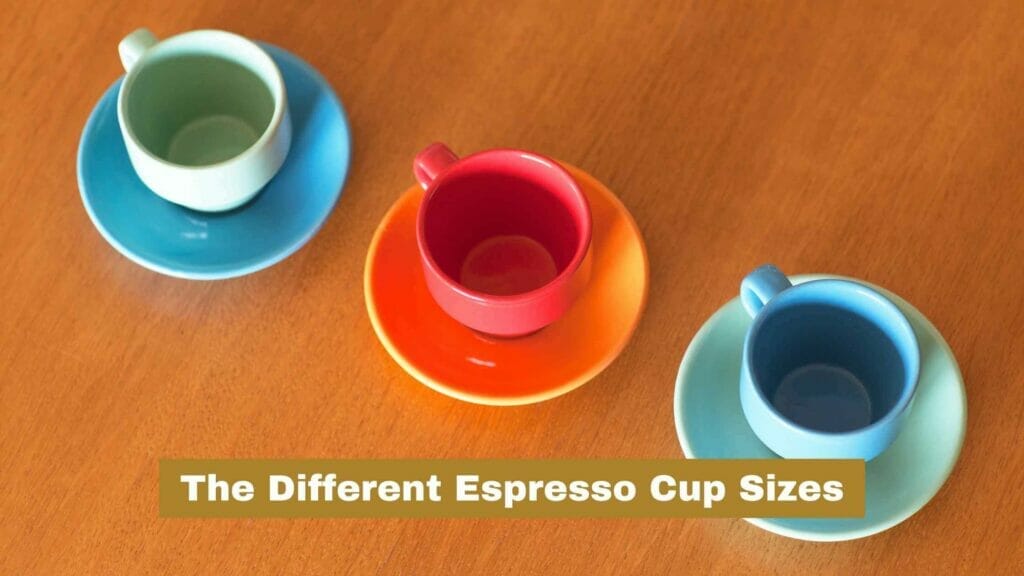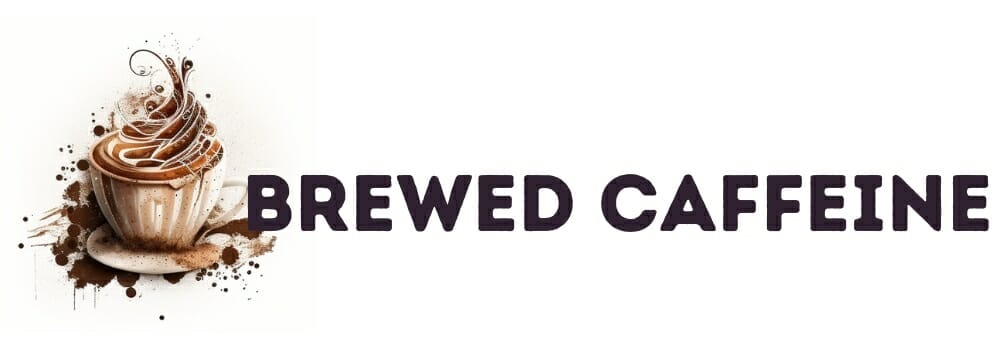
An espresso is just a tiny little coffee, right? Sort of. There is more than one size of espresso cup! Confused? Read on!
In the world of espresso, there are four main espresso cup sizes you can choose from. These are, in order of smallest to largest, ristretto demitasse, macchiato, and lungo. Other considerations of your espresso cup are whether it’s heated or not, the shape of its lip, whether or not it has a handle, and its color. There’s a lot to think about if you’re looking at getting your order just right!
As you already know, espresso is a concentrated drink that uses boiling water to extract espresso grounds into your cup. The result is a small serving of concentrated coffee with a delicious layer of crema that offers a rich, silky texture. Espresso is bitter and strong and can be served on its own or as part of your favorite drinks, such as lattes and cappuccinos.
When serving it straight, it’s done in its tiny little cup — an espresso cup. Make sure you know your cup sizes and how to order the correct one!
Most common espresso cup sizes
It seems strange to think about the cup sizes for something so small, but the smaller it is, the more critical the cup size is. Don’t worry; it’ll make more sense as you read on and see just how specific it is! For now, your cup sizes are as follows:
- Ristretto 0.8 oz (25 ml)
- Demitasse 2 oz (59 ml)
- Macchiato 3 oz (88 ml)
- Lungo 4 oz (118 ml)
It’s strange to think about this many cup options for about a 1 oz (29 ml) difference. Still, each is used differently amongst espresso enthusiasts and baristas.
Some are more popular than others regarding serving size and even the comfort of the espresso-to-cup ratio. In fact, most US-based espresso drinkers go for a 3 oz (88 ml) serving size.
I’ll talk about that a bit more next!
What size should espresso cups be?
There are several factors to consider when determining what espresso cup size will be best!
One of the most important things is to figure out what you’re ordering. Are you enjoying a single espresso or a double? Are you looking at adding anything to the drink itself or drinking it straight?
As you can imagine, the more that you’re going to have in your drink, the more space you’re going to need!
If you’re drinking a classic, single-shot espresso, most recommend going for a cup that can hold 2-3 oz (59-88 ml). This is the right size to keep your drink hot, and it also will keep the crema concentrated enough that it doesn’t spread too thin and disappear before you’ve had a chance to enjoy it.
Going with a cup size that is any larger means the crema could easily spread too thin, and you’ll lose that bubbly and creamy texture that is so important in a professionally-made espresso.
Why are espresso cups so thick?
If you’ve handled espresso cups, you’ll probably notice that they are thicker than you’d imagine. After all, it’s such a tiny cup, and it only holds a few ounces of liquid…why go through all that work? Consumer Reports explains that having a thick ceramic or porcelain cup will help hold in the warmth longer and keep that espresso just right for its consistency, flavor, and overall aesthetic.
Going with a cup that’s too thin can cool it off too quickly, and you’ll be left with a drink that is lacking in flavor and simply not correct as far as how it’s meant to be enjoyed!
How big of a cup is a double shot of espresso?
If you’re ordering a double shot of espresso, you can expect a drink of 2 oz (59 ml). In this case, most servers will offer you a demitasse or a macchiato cup. If you choose a demitasse, you’ll notice they’ll fill it right to the lip, so it’s often served on a saucer for this reason!
I’d order a macchiato or a lungo cup size if you want some breathing room. It’s all about personal preference as far as that’s concerned.
How many oz (ml) is a standard espresso shot cup?
A standard espresso cup at your typical restaurant or shop will be 1 oz (29 ml). This, too, will be filled right to the lip. Some baristas will even serve a classic espresso in a 1.5 oz (33 ml) cup to make it easier for the customer to enjoy.
Realistically, you can get many different variations and combinations when you go to coffee shops and serving sizes. If you want a specific size, you can always request it!
What is the size of a Starbucks espresso cup?
As usual, Starbucks sort of does its own thing regarding the cup sizes they use. Their choices are going to be a little off from your classic shops, coming in at:
- .75 oz (22 ml)
- 1.5 oz (44 ml)
- 2.25 oz (66 ml)
- 3 oz (88 ml)
If you’re used to ordering a classic espresso, you’ll find the 1.5 oz (44 ml) espresso cup to be your best choice for the expected serving. Of course, you’ll notice that Starbucks will serve you a strong espresso, making it a great choice for that distinctive, bitter taste!
What is the size of disposable espresso paper cups?
If you’re at a venue with disposable cups, you’ll find that the espresso one will be between 3-4 oz (88-118 ml). This is often the best size for those events since you’ll likely have to move around with your drink quite a bit, and the larger capacity will give you lots to work with.
Just make sure that you’re prepared to drink your espresso fast since the paper walls of the cup will make your drink cool off very quickly! You’ll want to preserve that crema by enjoying it as quickly as possible after it’s served.
What are the best cups for espresso?
So, with all of that being said, what will be the best cups for espresso? Assuming you’re looking at making espresso at home, you’ll want to get the proper little cups to help you enjoy your shot’s taste, texture, and overall aesthetic! Here are some characteristics to look for:
- A thick rounded lip
- Porcelain or ceramic material
- A flat handle or no handle
A thick rounded lip
At the top of your mug, you’ll want a rounded lip. This will help the mouth seal to the mug itself and ease the espresso flow from the mug to the drinker. With something as specific and flavorful as a piping hot espresso, this detail is significant to think about!
Porcelain or ceramic material
Porcelain or ceramic will be the best choice for your mug’s materials. Firstly, both hold their heat well and will offer you that preservation of your temperature from the first sip to the last. Many shops will actually heat the cups beforehand to help make them even hotter from start to finish — this is a great idea.
The second benefit is that they’ll keep the espresso’s taste pure, which is much more important than people think! With no paper or plastic to change its flavor, it’ll be a powerful feature of enjoying an espresso as purely as possible.
Fun Fact: The best color for an espresso cup’s inside is white since it’ll help you enjoy the aesthetic of the espresso with no color to change its overall effect.
A flat handle or no handle
Another feature is going to be the handle. The ideal choice is a flat handle since it’ll be large enough to hold and use to sip your drink. Impractical handles just get in the way.
Should you have an espresso cup with a handle? Most do prefer a handle if it’s big enough and designed to actually use. However, no handle is okay, too, for aesthetics, and it helps you surround your drink in a literal sense. It comes down to figuring out what you love most about your espresso experience.
What are small espresso cups called?
Most people usually refer to a demitasse when mentioning small espresso cups. This is the 2 oz (59 ml) serving size. This is the best choice for accentuating the espresso’s natural flavor because its small size concentrates the flavor and scent, bringing it closer to your nose.
There are four standard espresso cup sizes that you can order. These are ristretto 0.8 oz (25 ml), demitasse 2 oz (59 ml), macchiato 3 oz (88 ml), and lungo 4 oz (118 ml). Starbucks does its sizing, which I mentioned above, to help you order its size correctly. You’ll also want to learn about your espresso cup’s materials, handle requirements, and color!
If you know someone who adores espresso, this will be a wonderful article to share with them!
